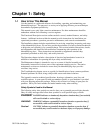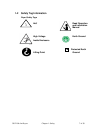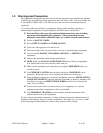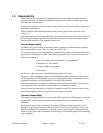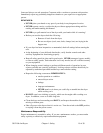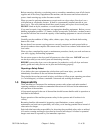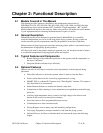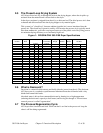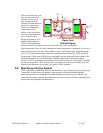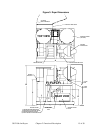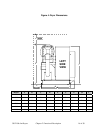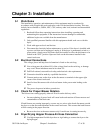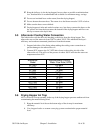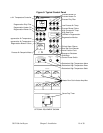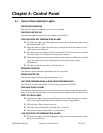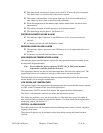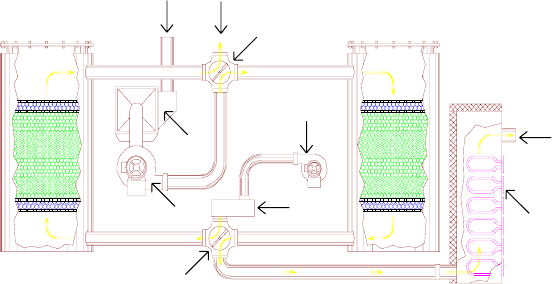
350-2100 cfm Dryers Chapter 2: Functional Description 14 of 58
When a desiccant bed is on-
line, it absorbs moisture
from the process air. In
time, the bed becomes
saturated with moisture and
needs to be regenerated.
The dryer automatically
redirects the process
airflow to the second bed,
and starts the regeneration
cycle on the first bed.
During regeneration, air is
heated to approximately
550°F and forced through
the desiccant bed. The moisture driven off the bed is bled to the atmosphere.
If the temperature of the air bled to atmosphere (bleed temperature) is measured, a rise can be
observed after a period of time. This condition, called "bed breakthrough" indicates that the
bed is dry. At bed breakthrough, the bleed air temperature peaks between 350°F and 400°F.
Dryer models 350 through 2100 dryers are equipped with the Dewpoint Extend feature. The
regeneration heaters turn off automatically on bed breakthrough for additional energy
savings. A 550°F regeneration temperature will dry the desiccant beds sufficiently to produce
process air dewpoint of -40°F. In a properly sized system, this ultra-low humidity level will
be more than adequate to dry plastics to as little as .003% moisture.
2-8 Specifying a Drying System
There were many variables considered in the selection of your drying system, including: type
of materials, residence time, throughput of the extruder or injection molding machine,
ambient air moisture and temperature, and the altitude at the processing site. Should your
operating environment change, the manufacturer can advise you on necessary equipment and
process time and temperature modifications.
Process Return Air
From Drying Hopper
Process
Filter
Assembly
Process
Blower
Bleed
Upper
Control
Valve
Lower
Control
Valve
Regeneration
Blower
Process
Delivery
Air
Process
Heaters
Desiccant
Bed
Regeneration
Heater
Desiccant
Bed
Figure Two:
Airflow Diagram



